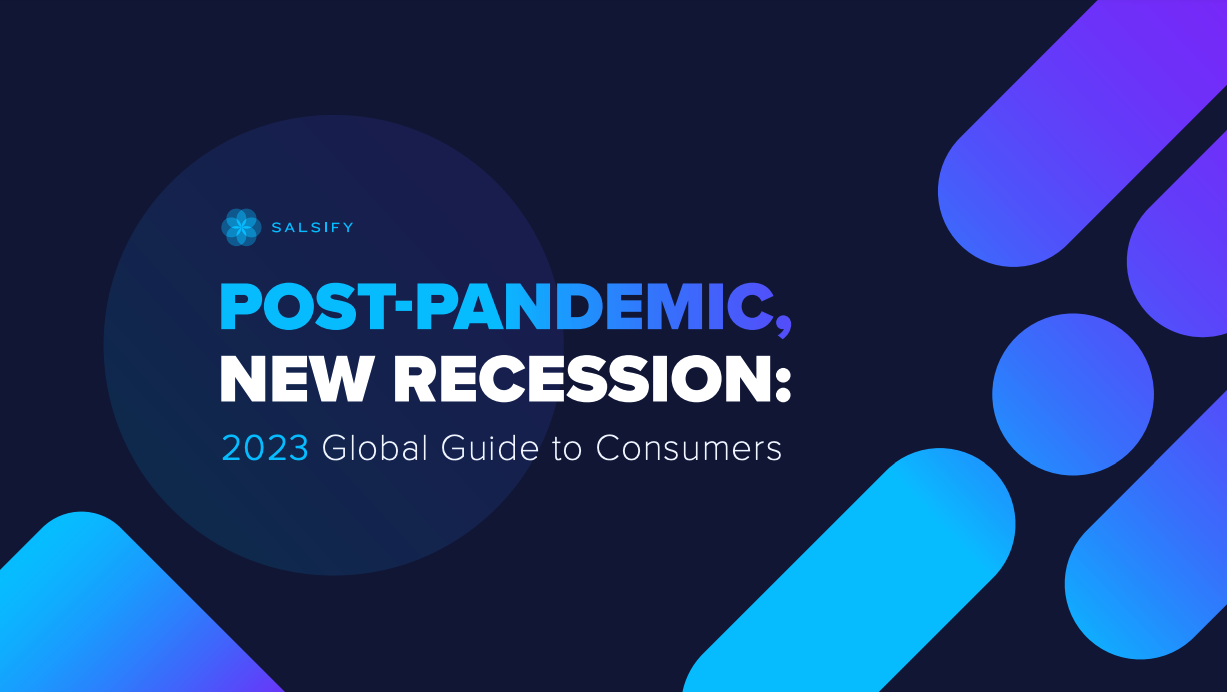Millennials vs. Gen X: What Do They Want From Brands?
Written By: Madeline Koufogazos
Millennials, born between 1981 and 1996, and Generation X (Gen X), born between 1965 and 1980, have experienced the digital world in completely different ways, and it’s drastically impacting their shopping habits.
While some within these groups are relatively close in age, the millennials versus Gen X discourse highlights disparities in how much money each generation makes, how they spend it, and their favorite shopping methods.
Here’s a breakdown of millennials vs. Gen X, including their shopping habits and tips for tailoring your strategy to meet their unique needs.
Millennials vs. Gen X: Values, Interests, and Shopping Habits
Millennials and Gen X have different approaches to product discovery, omnichannel shopping, and brand loyalty.
Millennial Shopping Habits
Millennials demand an omnichannel shopping experience, affordable products, and environmentally responsible brands.
Millennials Primarily Shop Online
Millennials were the last generation to experience a digital-free lifestyle. Born before technology reigned supreme, they quickly adapted to the evolution of the internet and social media platforms like Myspace.
This technological evolution paved the way for omnichannel shopping experiences that allow millennials to choose their most desired path to purchase. Much like their Generation Z (Gen Z) counterparts, millennials conduct a majority of their shopping online.
Salsify’s “2024 Consumer Research” report, a survey of 2,700 U.S. and U.K. respondents across generation groups, says 43% of respondents use social media as a method of product discovery.
According to Statista, 59% of global millennials purchase directly from brands’ social media accounts, engaging in social commerce, otherwise known as social shopping.
Thirty-eight percent of millennials consider themselves content creators, and 29% consider themselves influencers, according to HubSpot’s “2022 State of the U.S. Consumer Trends Report.” In comparison, only 28% of Gen X consider themselves content creators, and 19% are influencers.
If you want to appeal to the millennial shopper, consider partnering with influencers to increase your brand awareness. You’ll make your brand a household name, and your audience will appreciate your efforts to meet their needs.
Millennials’ (Lack of) Money Impacts Their Shopping Behaviors
Millennials get a bad rap for their “avocado toast” spending habits, but truthfully, they’re spending less than you may think — and on different things than their predecessors.
The 2008 economic recession, COVID-19 pandemic, inflation, and student debt have given millennials less of a financial advantage than previous generations, despite being more highly educated.
According to Young and the Invested, a financial literacy resource for young people, millennials are spending less on housing, cars, and retirement than baby boomers and Gen X.
Instead, they spend their money on experiences and travel, paying off debt, sustainability-focused businesses, and wellness.
While this may be viewed as irresponsible, millennials don’t have poor spending habits, says the Young and the Invested. They have less wealth than their predecessors did at the same age.
This lack of money affects millennials' spending habits in various ways. For example, they have less brand loyalty, as they’re more interested in the best deal.
Salsify’s “2023 Consumer Research,” reports that 63% of shoppers purchase private labels to save money, and a whopping 96% purchase store-brand groceries.
Many millennials are also delaying life milestones, like starting a family and purchasing a house, due to financial distress.
Brands should be cognizant of their financial challenges when targeting millennials. If possible, offer deals, discounts, and other perks that will make the purchase worthwhile.
Millennials are spending less on material goods and more on experiences and health and wellness. Emphasize how your products will help improve their quality of life and improve their self-care.
If you’re a luggage brand, for example, create marketing content that showcases how your products will help millennials travel with ease. If your brand offers budget-tracking services, like Mint, explain how your products will help them become debt-free.
You can capture millennials’ interest with personalization, excellent product pages, and experiential shopping.
Millennials Value Sustainability and Good Ethics
A majority of millennials are conscientious of brands’ ethics and sustainability practices when making purchasing decisions.
According to HubSpot’s “2022 State of the U.S. Consumer Trends Report,” 41% of surveyees want companies to take stances on social issues, and 42% are more likely to purchase from companies that treat their employees well. Comparatively, 36% of Gen X prioritize well-treated employees when making purchasing decisions.
Salsify’s “2024 Consumer Research” reports that 34% of shoppers are resonating with eco-friendly packaging and 27% with fair labor practices.
If you want to appeal to millennial shoppers, you should be transparent about your sustainability practices and your social stances. Dedicate parts of your website to the causes that you’re passionate about and the efforts you’re taking to support them.
Outdoor clothing and gear brand Patagonia does this extremely well. The company’s site has a web page entitled “Activism” that promotes different causes and offers customers an opportunity to show their support.
If you’re a makeup brand, for example, you could commit to making products with environmentally friendly, clean ingredients. If you’re an alcohol brand, you could establish a recycling program for customers’ empty bottles.
Making your brand more sustainable won’t just benefit the earth — it will capture millennial shoppers’ attention (and money).
Gen X Shopping Habits
Gen X is often called the “sandwich generation” because it borders millennials and baby boomers. They prefer in-store shopping, high-quality products, and remaining fiercely loyal to their favorite brands.
Gen X Prefers Brick-and-Mortar Shopping
Gen X is just as online as its millennial counterparts. Still, most Gen Xers spend their time on social media platforms like Facebook (75%) and YouTube (71%) instead of TikTok (35%) and Instagram (49%), according to HubSpot.
While 66% of Gen Xers search for products on mobile, 73% still prefer to purchase products in-store, reports HubSpot.
Those who are online prefer targeted ads, especially targeted TV ads. HubSpot reports that 55% of surveyed Gen Xers say that TV ads are their biggest source of product discoverability.
While some shoppers are turned off by this targeting, Gen X prefers it. If you’re appealing to the Gen X shopper, consider creating an entire targeted campaign that reaches them in their favorite spots, like TV ads and Facebook sponsored ads.
Gen X Values Product Quality
Gen X values product quality, and is willing to spend more to get a worthwhile product.
According to HubSpot, 55% of Gen Xers consider product price, and 51% take product quality into consideration when deciding whether or not to make a purchase.
Salsify’s 2024 consumer research says that 73% of consumers will stay loyal to a brand if they have high-quality products.
You can emphasize product quality with well-designed product pages, lifestyle images, and customer reviews.
Gen X Has Fierce Brand Loyalty
Unlike millennials, Gen X is willing to spend extra on a brand they trust. According to Statista, 75% of Gen Xers are brand loyalists.
If you want to gain and retain their brand loyalty, consider creating a loyalty program that incentivizes more purchases.
If you don’t have a strong presence on Facebook, this is a great place to connect with Gen Xers and promote your brand. They’ll appreciate the opportunity to engage with you on their favorite social media platform.
Gen Xers expect high-quality, seamless experiences, so by nurturing their brand loyalty, you’ll both reap the rewards.
Recap: 3 Best Ways to Capture Millenials vs. Gen X Shoppers
So, what’s the side-by-side, bottom-line, TL;DR takeaway in this post when it comes to selling to different generations?
To appeal to millennial shopping habits, focus on:
- Creating engaging, thorough omnichannel experiences;
- Being cognizant of shoppers’ financial situations; and
- Promoting your sustainable efforts.
When trying to appeal to Gen X shopping habits, focus on:
- Creating excellent in-person shopping experiences;
- Highlighting product quality; and
- Encouraging brand loyalty.
How To Appeal to All Your Audiences? It’s Personal
As you can glean, each generation requires a different approach, but there’s some overlap. As long as you’re offering personalized, high-quality experiences, you’ll win over millennials and Gen Xers alike.

Insight Into Consumer Shopping Behaviors
Download the “2024 Consumer Research” to learn how you can tailor your digital marketing strategy to meet global consumer demands.
DOWNLOAD REPORTWritten by: Madeline Koufogazos
Madeline Koufogazos (she/her) is an editor and writer at Salsify, based out of Boston. She enjoys sharing her insights on consumer trends and behaviors, commerce, media, pop culture, and travel.
Recent Posts
5 Ecommerce Tips To Help Marketers Enter the New Year Stress-Free
How Many Digital Sales Channels Do Shoppers Review Before Purchasing Products?
What the Data Says About Consumer Interest in AI Shopping Agents
Subscribe to the Below the Fold Newsletter
Standing out on the digital shelf starts with access to the latest industry content. Subscribe to Below the Fold, our monthly content newsletter, and join other commerce leaders.

.svg)